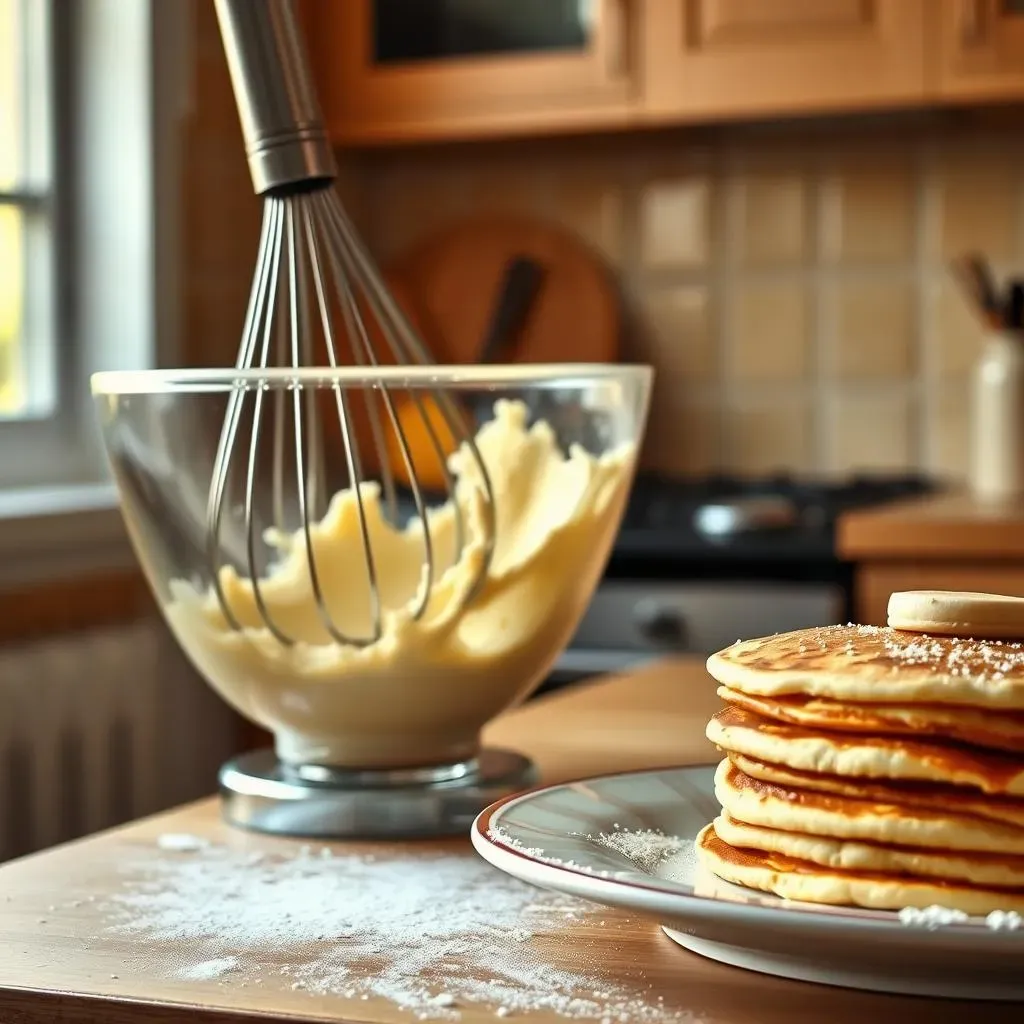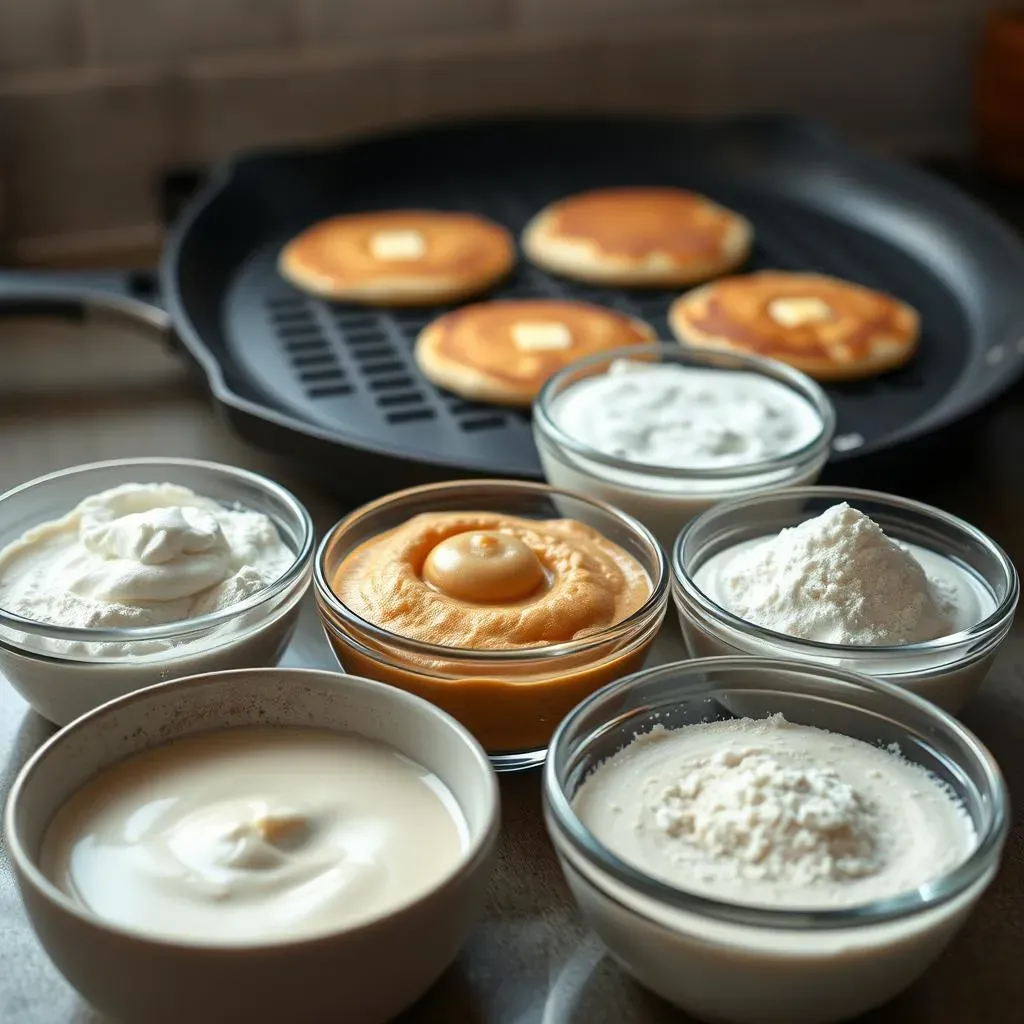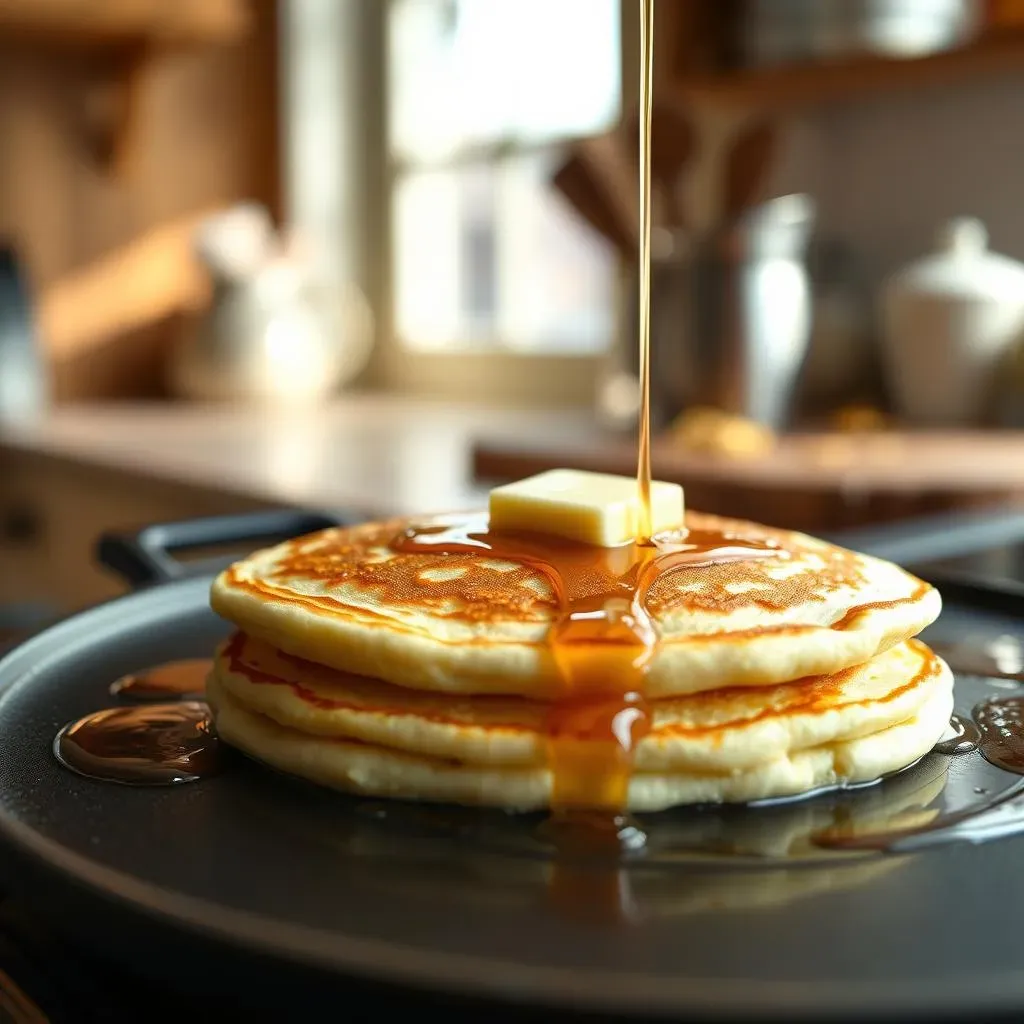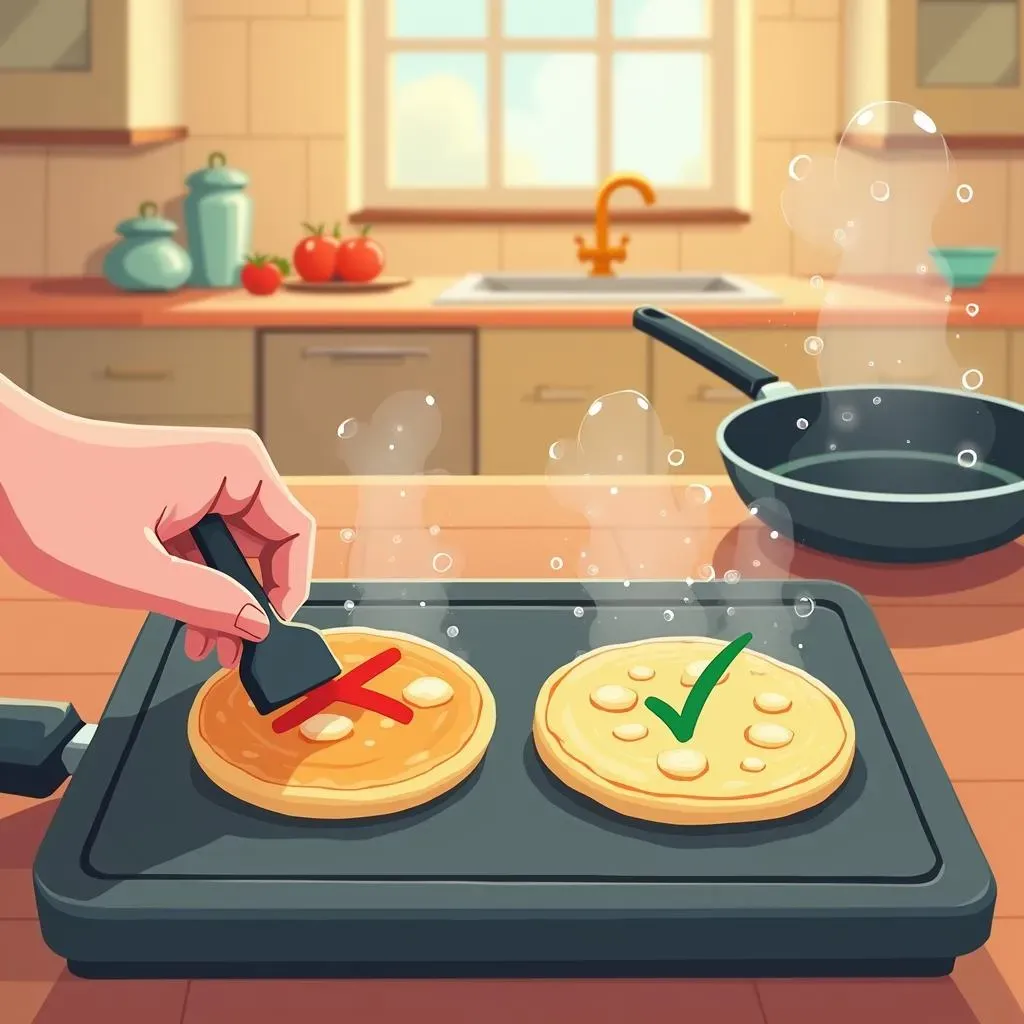Table of Contents
Ever flipped a pancake only to find it's drier than the Sahara? You're not alone. Many home cooks face the dreaded dry pancake dilemma. It's a breakfast bummer, I know. This article tackles the big question: why pancakes dry. We'll uncover the sneaky culprits behind those crumbly disappointments, from overzealous mixing to the type of flour you use. We’ll explore how your cooking technique, like pressing down on your pancakes, can suck the moisture right out. I'll break down the science of pancake perfection, offering simple tweaks to transform your breakfast game. Get ready to say goodbye to dry, sad pancakes and hello to fluffy, moist stacks that'll make your mornings brighter. You'll learn exactly what to avoid and how to achieve pancake nirvana. So, grab your spatula, and let's get started.
Overmixing: The Silent Pancake Killer

Overmixing: The Silent Pancake Killer
The Gluten Connection
so you're whisking away like you're trying to win a race, right? That’s where the trouble starts. Overmixing pancake batter is a major no-no. Why? It's all about gluten. When you mix flour with liquid, gluten, a protein, starts to develop. A little gluten is good, it gives pancakes some structure. But too much mixing creates too much gluten. This leads to tough, rubbery pancakes, and that's exactly what we don't want. You want light and fluffy, not chewy and dense.
Think of it like this: you're building a house. A little bit of cement is good, but if you keep adding cement and mixing it, it becomes hard and difficult to work with. Same with pancake batter.
Lumps are Okay
Don't be afraid of a few lumps in your batter. Seriously, some lumps are your friends. They're a sign that you haven't overmixed. I know, it goes against our instincts to make everything perfectly smooth, but in this case, it's a key to achieving that light and airy texture. When I first started making pancakes, I thought I needed to make the batter as smooth as baby skin. Turns out, that was completely wrong. The best pancakes have a few lumps in the batter, it's a sign of good things to come.
It’s like making mashed potatoes, you want it smooth but not gluey, right? Same idea here.
Quick Mixing Tips
Here's the deal: mix just until the dry ingredients are combined with the wet. That's it. It should take less than a minute. Don't go crazy with the whisk. Use a light hand, and gently fold the ingredients together. If you still see a few streaks of flour, that's absolutely fine. Less is more when it comes to mixing pancake batter. Remember, you are not making bread; you are making pancakes. Trust me, your pancakes will thank you.
“The secret to great pancakes is to treat the batter like it’s made of glass—handle it gently!”
Here are some quick mixing tips:
- Combine dry ingredients first.
- Add wet ingredients to dry.
- Mix until just combined.
- Don't worry about a few lumps.
Flour Power: The Impact of Different Flours on Pancake Moisture

Flour Power: The Impact of Different Flours on Pancake Moisture
The Usual Suspect: All-Purpose Flour
so you've nailed the mixing, but your pancakes are still a bit dry? Let's chat about flour. All-purpose flour is the go-to for most people, and it works fine, but it's not the only player in town. It has a moderate protein content, which means it can contribute to that gluten development we talked about earlier. If you're not careful, it can lead to a slightly tougher texture, which, yes, can make your pancakes feel drier, even if they're not actually lacking moisture.
Think of all-purpose flour as the dependable friend who’s always there, but not always the most exciting. It gets the job done, but it's not going to add a lot of extra moisture or flavor on its own.
Exploring Alternatives: Lower Protein Options
Now, if you're aiming for super tender, moist pancakes, it’s time to branch out. Lower-protein flours like cake flour or pastry flour can make a big difference. These flours have less gluten-forming potential, so they result in a more delicate crumb. Using these flours can create a softer, more melt-in-your-mouth pancake. When I first tried using cake flour for pancakes, it was like a whole new world. They were so light, they practically floated off the plate!
It’s like choosing between a heavy winter coat and a light summer jacket. Both protect you, but one is much lighter and more flexible.
Here is a list of flours and protein content
Flour Type | Protein Content | Best Use |
|---|---|---|
All-Purpose Flour | 10-12% | General baking |
Cake Flour | 6-8% | Cakes, tender baked goods |
Pastry Flour | 8-9% | Pies, pastries, tender goods |
Bread Flour | 12-14% | Breads, chewy baked goods |
The Hydration Factor
But here's the kicker: it’s not just about the protein content. The way different flours absorb liquid also plays a massive role in how moist your pancakes turn out. Some flours are thirstier than others, meaning they soak up more liquid. If you’re using a flour that absorbs a lot of moisture, you might need to add a bit more liquid to your batter to achieve the right consistency. It's all about balance. The key is to adjust the liquid depending on the flour, and the way to know is by looking at the consistency of the batter.
It’s like watering your plants. Some plants need a lot of water, others need just a little. You need to know your plants (and your flours) to keep them happy.
The Heat is On: Cooking Temperature and Dry Pancakes

The Heat is On: Cooking Temperature and Dry Pancakes
Too Hot to Handle
so you've got the batter right, you've chosen the right flour, but your pancakes are still turning out dry? Let's talk heat. Cooking your pancakes on a too-hot griddle is a recipe for disaster. When the heat is too high, the outside of the pancake cooks way too fast, and it can burn. This creates a hard, dry layer that prevents the inside from cooking properly. The result is a pancake that's dry on the outside and potentially raw in the middle. It's like trying to bake a cake in a furnace; you’ll end up with a burnt crust and a gooey center. Not what we want.
I remember one time I was in a rush and cranked the heat way up thinking it would speed things up. I ended up with a pile of hockey pucks. Lesson learned: patience is key when it comes to pancake heat.
Low and Slow is the Way to Go
The ideal cooking temperature for pancakes is medium-low. This allows the pancake to cook through evenly without burning the outside. The goal is to achieve a golden brown color and a light, fluffy texture. The lower temperature gives the pancake time to cook through, allowing the moisture to evenly distribute, resulting in a moist, delicious pancake. Think of it like slow-cooking a roast; the low heat allows the flavors to meld and the meat to become tender. Same with pancakes, low and slow is the way to go.
It's not a race, it's a culinary journey. Take your time, and your pancakes will reward you.
“Pancake cooking is a delicate dance between heat and time; too much of either will throw off the balance."
Here are some quick cooking tips:
- Preheat your griddle over medium-low heat.
- Use a small amount of butter or oil to grease the surface.
- Cook for a few minutes per side, until golden brown.
- Don't flip too early
Pressing Matters: Why You Should Not Flatten Your Pancakes

Pressing Matters: Why You Should Not Flatten Your Pancakes
The Squeeze is Real
so you’ve got your batter mixed just right, you've got the perfect heat, and the first pancake hits the griddle. You see a bubble, and what do you do? If you're like most people, you might be tempted to press it down with your spatula, right? Wrong! That's a classic mistake that's going to lead you straight to dry pancake town. When you press down on a pancake, you're squeezing out all the air that makes it light and fluffy. It's like deflating a balloon; you're removing the very thing that gives it its lift and airy texture.
Think of it like this: each bubble in your pancake is like a tiny air pocket. When you press down, you're popping those air pockets and squeezing the moisture out. You're essentially turning your potential fluffy pancake into a dense, flat disc.
Air is Your Friend
Those bubbles you see forming are not the enemy, they are your allies. They're a sign that your leavening agent (usually baking powder or baking soda) is doing its job. These bubbles are what make your pancakes light and airy. When you press down, you're forcing out the air, making the pancake denser and less fluffy. You're also making it harder for the pancake to cook evenly. Instead of pressing, be patient and let the bubbles do their work. They'll create those lovely little air pockets that we all crave in a good pancake.
It's like when you're making bread; you want to let the dough rise and create those air pockets, right? Same principle applies to pancakes. Don't try to squash the air out; let it do its thing.
“The key to fluffy pancakes is to treat them like delicate clouds, not to squash them like unruly weeds."
Gentle is the Game
So, what should you do instead of pressing? Be gentle. Use your spatula to flip the pancake when the edges start to look set and bubbles have formed on the surface. Don't poke or prod. Just slide the spatula underneath and give it a quick, confident flip. Avoid the temptation to press it down, and let it cook undisturbed. This will help you achieve a light, fluffy, and moist pancake every time. Remember, patience and a gentle touch are your best friends in the pancake-making process.
It’s like handling a newborn baby; you want to be gentle and supportive, not forceful and squishy. Same goes for your pancakes.
Action | Result |
|---|---|
Pressing down | Dense, flat, dry pancake |
Gentle flipping | Fluffy, moist pancake |
Farewell to Dry Pancakes
So, there you have it. Dry pancakes aren't some unavoidable breakfast curse. It's usually a mix of overdoing it in the batter bowl, using the wrong flour, getting the heat wrong, or squishing the poor things while they cook. Now you know the secrets to avoid these common mistakes. Remember to mix gently, consider your flour choice, keep the heat moderate, and resist the urge to flatten your pancakes. With these simple adjustments, you're well on your way to creating stacks of fluffy, moist pancakes that are a joy to eat. Go forth and conquer your griddle, and may your future breakfasts be deliciously moist.